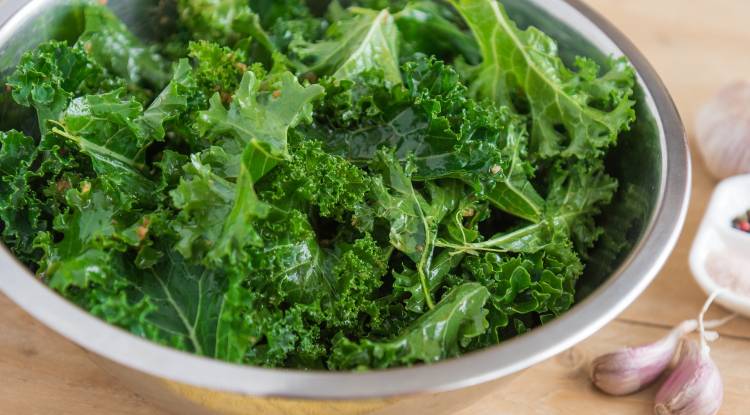Sarcopenia - Symptoms, Causes & Solutions

According to recent government statistics there are now 1.5 million Brits over the age of 85. If predictions are to be believed then this is merely the tip of the iceberg. An increase of 3.5 million is expected by the year 2050. Little wonder, then, that the once rare diagnosis of sarcopenia is gaining renewed attention in the medical community.
What is Sarcopenia?
Sarcopenia derives its name from the Greek words "Sarx" (flesh) and "Penia" (loss) and defines the process of muscle wasting with advancing age.
Sadly, the study of sarcopenia is still largely in its infancy, and no formal definition for the condition has yet been agreed. The defining characteristic of low muscle mass, accompanied by either low muscular strength or low physical performance, have been proposed by the European Working Group on Sarcopenia in Older People (EWGSOP).
Why is Muscle Wastage Such a Concern?
One of the reasons for the recent focus on sarcopenia is the potentially life-changing impact it can have on older people. For example, sarcopenia can result in increased difficulties when performing everyday activities and, as a result, the likelihood of falls. Fractures also tend to take longer to repair in older patients, whilst even short periods of immobilisation can further worsen muscle wasting.
Furthermore, experts suggest that sarcopenia can lead to increased risk of cardiovascular and metabolic diseases such as type 2 diabetes and obesity.
The potential impacts of sarcopenia on both older people and the support services they rely on are considerable, and are only likely to increase as the British population ages.
What Causes Muscle Wasting?
Sarcopenia is a complex condition, with no single cause. Leading researchers believe that a wide range of factors may contribute to its onset:
Impaired Digestion and Absorption of Amino Acids
 Amino acids are commonly referred to as the ‘building blocks’ of muscle. Of the twenty recognised amino acids, nine cannot be made by the body and must instead be consumed in the diet. Sadly, studies suggest that older adults do not absorb these essential amino acids as effectively as their younger counterparts. The result is that less protein is available to build or maintain muscle.
Amino acids are commonly referred to as the ‘building blocks’ of muscle. Of the twenty recognised amino acids, nine cannot be made by the body and must instead be consumed in the diet. Sadly, studies suggest that older adults do not absorb these essential amino acids as effectively as their younger counterparts. The result is that less protein is available to build or maintain muscle.
Decreased Workload for the Muscles
As we age, we tend to become less active. This means we are not sufficiently working our muscles enough to encourage muscle maintenance.
Decreased Food Intake
Older people tend to find their appetite declines with age. This reduction in food intake can have an impact on sarcopenia by starving the body of sufficient energy and protein to maintain muscle. This issue is compounded by the fact that older adults cannot utilise protein as efficiently as younger individuals.
Decreased Insulin Sensitivity
Insulin plays a number of important roles in the avoidance of sarcopenia. Firstly, it is important for the dilation of blood vessels, which allows nutrients such as essential amino acids to reach our muscles.
Insulin also exerts an anti-catabolic effect, meaning it helps to prevent muscle breakdown. It is unfortunate, therefore, that age, poor dietary habits and low physical activity levels can all lead to our bodies losing sensitivity to insulin, and therefore it’s positive impacts.
Chronic Inflammation
As we age there is an increased risk of inflammation in the body, which can accelerate muscle breakdown. This issue is well known to be worsened by an inactive lifestyle.
Impaired Muscle Synthesis
There is evidence to suggest that getting older is often associated with complications in muscle protein synthesis. As a result, even when older people exercise regularly and consume sufficient protein, this may not lead to maintained muscle mass.
These above factors collectively are termed anabolic resistance. Although these factors have differing origins, they are all inextricably linked, because ultimately they all equate to a progressive loss of muscle mass, strength and physical capability.
Can We Reverse Anabolic Resistance?
There is no denying that anabolic resistance is having a negative impact on the health of many older people; but are there solutions to this problem? An extensive study from the University of Birmingham aimed to answer that very question. The scientists in question collated the results from numerous past studies, and the findings are startling.
First in the firing line was whether resistance training alone could reverse the loss of muscle mass in older subjects. Out of the seventeen studies analysed, eight suggested that no significant impact occurred without the addition of dietary changes. Considering the impacts of dietary changes alone, almost half of the studies consulted (8 out of 21) confirmed that this, too, had no significant impact.
Crucially, the researchers also analysed ten studies that altered both the dietary practices of older adults and put them on a resistance training programme. Impressively, eight of these studies provided strong evidence that a holistic approach to diet and exercise can indeed reverse anabolic resistance. These findings are huge for the treatment of muscle loss associated with ageing.
The Solutions to Muscle Wasting
Dietary changes and exercise have been shown to reverse the symptoms of sarcopenia, but what specific changes are necessary?
Resistance Exercise
Current NHS guidelines state that older adults (aged 65+) should complete muscle strengthening exercises that work all of the body’s major muscle groups at least twice a week. This exercise should be taken to the point where it is difficult to perform additional repetitions whilst maintaining correct techniques.
 Muscle strengthening exercise does not necessarily have to be resistance exercise. The NHS state that moving/carrying heavy objects, gardening that involves digging, and body weight exercises such as press-ups all class as muscle strengthening.
Muscle strengthening exercise does not necessarily have to be resistance exercise. The NHS state that moving/carrying heavy objects, gardening that involves digging, and body weight exercises such as press-ups all class as muscle strengthening.
Important results from Canadian researchers suggest just how effective resistance training can be for older adults. A study involving 195 participants carrying out resistance training found that every subject improved in muscle size, muscle strength or functional capacity. The conclusion from this study is that an effective resistance training program has the potential to benefit all age groups.
Importantly for the prevention and reversal of sarcopenia, resistance training also improves insulin sensitivity. This increased response to insulin enables blood vessels to dilate more effectively, allowing nutrients such as essential amino acids to reach our muscles. Furthermore, insulin exerts an anti-catabolic effect, thus helping prevent muscle breakdown.
Lastly, weight training is also important for a healthy skeleton, as resistance exercise increases the deposit of calcium onto the bones. This greater bone mineral density helps to prevent osteoporosis, as well as lowering the risk of falls and fractures.
Protein
Adults in the UK are recommended to have a daily protein intake of 0.8g for every kilogram of bodyweight. For example, a 70kg person should, therefore, ingest 56g of protein per day. However, this current advice is fundamentally flawed.
This recommended protein intake arose from the combined results of nineteen different nutritional studies. Crucially, however, eighteen of these only featured young adults. As a result, the standard recommendation is not necessarily suitable for older adults.
This inadequacy is highlighted by a study which followed older adults who were consuming the standard protein recommendation. It was found that over a four month period these older adults actually saw a significant reduction in thigh muscle mass despite meeting nutritional recommendations.
World-leading research groups investigating sarcopenia now recommended that older adults consume 1.2g of protein for every kg of body mass. This means that a 70kg person should ingest 84g of protein per day instead of 56g – quite a difference!
Current nutritional recommendations also state that individuals aiming to increase or preserve muscle mass should ingest high-quality protein every 3-5 hours. Protein sources are classed as high quality if they contain all the essential amino acids our body needs. Meat, fish, milk, cheese, eggs and whey are all great examples.
Getting enough protein is far from easy. For example, protein can make you feel full for longer. This decreased desire to eat, coupled with the potential appetite reductions in older adults, can lead to fewer calories being consumed during the day.
Research also shows that many older adults only ingest sufficient protein to stimulate muscle protein growth once per day, with other meals being deficient.
Luckily, however, science may have a solution to this problem. It was found recently that daily supplementation with protein bars can result in a significant increase in both protein and energy intake. The specially designed protein formulas used in the study provided 7.5g of essential amino acids, which was made up of 40% leucine, the amino acid known to be the most potent stimulator of muscle protein synthesis.
Supplements to Help Muscle Health
We have established the proven benefits of muscle-strengthening exercise and altering protein intake in reversing sarcopenia. However, this is far from the whole story. There are also a range of beneficial supplements that can boost your musculoskeletal health further.
Protein / Amino Acids
As discussed earlier, it is important to consume good quality protein multiple times per day to maintain muscle mass. Because of this, many older adults are using protein supplements such as whey or casein to achieve this. Similarly, it is also becoming popular to ingest leucine or other essential amino acids alongside daily meals. Interestingly, this strategy also does not seem to affect the appetite, and therefore helps older adults to consume the necessary amount of energy.
Vitamin D & Calcium
Calcium and vitamin D both play important roles in musculoskeletal health. Calcium is needed for the maintenance of normal bones, muscle function and neurotransmission. Fortunately, it is easily found in the diet.
In contrast, most of the vitamin D we obtain is from sunlight and deficiencies are commonplace. For this reason the UK government recommends that everyone supplements with 10 micrograms of vitamin D throughout the autumn and winter months.
Vitamin D is needed for the functioning of the immune system and the maintenance of normal muscle function. Importantly, vitamin D has been shown to help reduce the risk of falls as a result of postural instability and muscle weakness. This is due to vitamin D’s important role in helping the absorption and utilisation of calcium.
So it seems clear: to help reap the maximum benefits out of muscle strengthening exercise, we must have an adequate intake of calcium and vitamin D.
Fish Oils
As mentioned earlier, chronic inflammation is one of the contributing factors to sarcopenia. Although a healthy lifestyle, including a balanced diet and exercise regime can contribute to controlling inflammation, many people benefit from taking supplements. One of the most popular supplements with older adults is fish oil, namely products such as cod liver oil.
Cod liver oil capsules provide a rich source of essential fats and vitamin A; an antioxidant vitamin that helps to reduce oxidative stress. Furthermore, cod liver oil contains a high concentration of vitamin D, making it a great supplement for older adults aiming to support their muscle health.
Creatine
 Creatine occurs naturally in our bodies and is stored in our muscle cells as phosphocreatine. This compound is what fuels our muscles during brief but strenuous activities such as resistance training. We can obtain some creatine through eating animal products, but consuming high levels through food alone can be difficult and impractical. As a result, many people rely on supplementation.
Creatine occurs naturally in our bodies and is stored in our muscle cells as phosphocreatine. This compound is what fuels our muscles during brief but strenuous activities such as resistance training. We can obtain some creatine through eating animal products, but consuming high levels through food alone can be difficult and impractical. As a result, many people rely on supplementation.
Creatine is heavily researched and has been safely used for decades. Creatine supplements work by increasing the phosphocreatine content of the muscles, leading to there being a greater amount of fuel available to us. This often leads to improved performance during muscle-strengthening activities.
Creatine supplementation has consistently shown to improve the muscle building potential in older adults. One notable study found that combining creatine supplementation and resistance training led to three kilos of extra muscle growing, when compared to performing resistance exercise alone. Such additional muscle mass should have a noticeable impact on strength, physical capabilities and quality of life.
To Summarise
- Sarcopenia is the age-related loss of muscle mass that is accompanied by low muscular strength and/or physical performance.
- Sarcopenia is such a concern because it increases the risk of various other diseases and can decrease physical ability, which may lead to falls and fractures, reducing independence and life of quality.
- Anabolic resistance, which leads to sarcopenia, is caused by numerous factors such as reduced amino acid digestion/absorption, impaired appetite and calorie intake, reductions in physical activity, insulin resistance and chronic inflammation.
- There is some evidence that anabolic resistance can be reversed by dietary changes or resistance training provision. However, the most effective way to combat anabolic resistance is utilising both.
- The NHS recommends that older adults partake in muscle strengthening exercise at least twice per week, targeting all the main muscle groups.
- Resistance training is the most effective form of muscle strengthening activity and is easily progressed to promote continual developments in muscle, strength and physical capacity.
- It is recommended that older adults consume 1.2g of protein per kg of body mass, and spread this out evenly throughout the day to stimulate protein synthesis multiple times daily.
- Protein and essential amino acid supplements offer an effective, safe and cost-effective method of negating appetite restrictions to help increase daily protein and calorie intake and also to improve the protein quality of daily meals.
Sources:
- https://www.ncbi.nlm.nih.gov/pubmed/20392703
- https://www.ncbi.nlm.nih.gov/pubmed/27555299
- http://www.nhs.uk/Livewell/fitness/Pages/physical-activity-guidelines-for-older-adults.aspx
- https://www.ncbi.nlm.nih.gov/pubmed/27174923
- https://www.ncbi.nlm.nih.gov/pubmed/25717010
- https://www.ncbi.nlm.nih.gov/pubmed/25056502
- https://www.ncbi.nlm.nih.gov/pubmed/23867520
- http://journals.lww.com/acsm-msse/Fulltext/2016/03000/Nutrition_and_Athletic_Performance.25.aspx
- https://www.ncbi.nlm.nih.gov/pmc/articles/PMC4162481/
- https://www.researchgate.net/publication/303312512_THE_IMPACT_OF_ESSENTIAL_AMINO_ACID_SUPPLEMENTS_ENRICHED_WITH_L-LEUCINE_ON_APPETITE_AND_ENERGY_INTAKE_IN_ELDERLY_WOMEN
- https://www.ncbi.nlm.nih.gov/pubmed/25993883

 Nicole
Nicole 
























